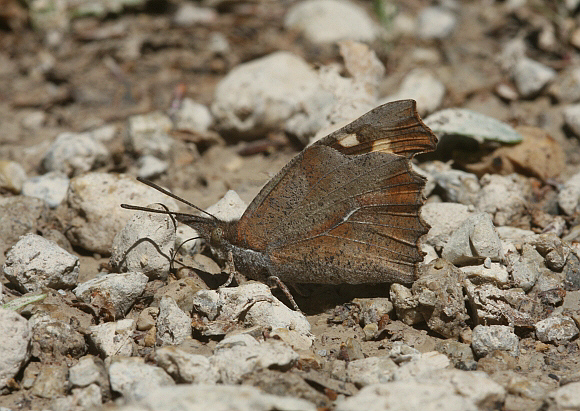 Libythea celtis, Ravni Dabar, Velebit mountains, Croatia – Peter Bruce-Jones
Libythea celtis, Ravni Dabar, Velebit mountains, Croatia – Peter Bruce-Jones
Introduction
The Libytheinae are one of the most primitive groups of butterflies, and were probably the first to branch from the Nymphalid evolutionary tree.
The Libytheinae contains only 13 species worldwide. All of the Old World Libytheinae are placed in the genus Libythea. In addition to the Palaearctic species celtis there is 1 species on Mauritius, 1 in Africa, 2 on Madagascar and 1 on the Marquesas islands in Polynesia.
Libythea are characterised by having dark uppersides marked with orange streaks and spots, and undersides cryptically marbled in shades of brown. The angular fw apex is another feature common to all the species. By far the most characteristic feature however is the long “beak” formed by the elongated labial palpi. The palpi are sensory organs used for the detection of pheromones, and are far more prominent in Libytheines than in any other group of butterflies.
Libythea celtis has an almost contiguous distribution from Portugal and Morocco to Japan.
Habitats
This butterfly is found in open areas with scattered Celtis trees. It is normally found at elevations between sea level and about 500m but has been recorded as high as 2300m.
Lifecycle
The egg is tall and barrel shaped. It is laid close to a leaf bud on Celtis australis ( Ulmaceae ). The larva is similar to that of Pierines, being green, cylindrical, and covered with short fine setae. There is a thin yellow line along the back of the abdominal segments, and another fine yellow line along the sides. If disturbed the larva instantly drops from the leaf it is feeding on, suspended by a long silk thread, and slowly hauls itself back up when the danger has passed. The pupa is similar to that of Satyrines – smooth, elongated, and suspended by the cremaster without the use of a silk girdle.
Adult behaviour
The butterflies disperse shortly after emerging, and at such times large aggregations of males often form at mud-puddles. In warm hazy weather conditions they often bask on foliage several metres above ground level, but never open their wings when on the ground. They overwinter as adults on bushes, with their long palpi appressed to a stem, giving the impression of a dead leaf attached by its stalk.
